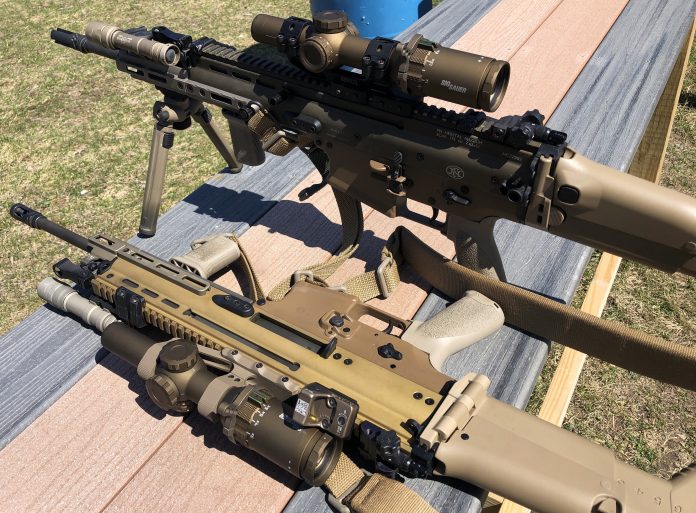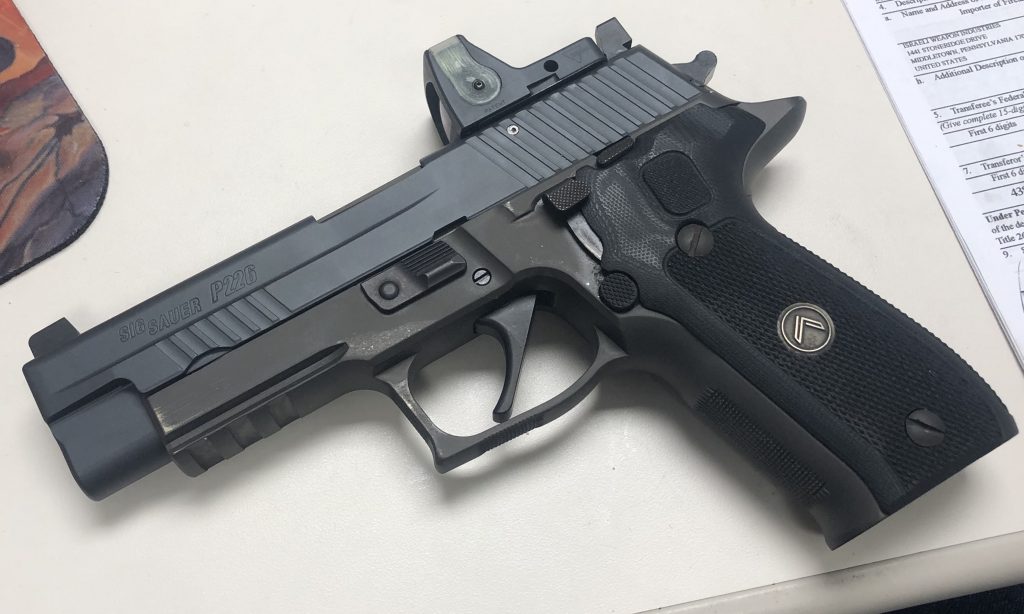
It is not secret that optics are the technology that has progressed the furthest in firearms during the 21st Century. In 20 years we have gone from a state where iron sights were the standard to the mass adoption of the daylight bright illuminated low power variable optic.
Both the United States Army and the United States Marines have selected an LPVO, Sig and Trijicon respectively, to top their service weapons and the optics outperform anything that would have been available when the ball dropped on 2000.
The Army DVO (Direct View Optic) is a Sig Tango6T. One that will populate the inventory for years to come on the M4A1 and probably until that rifle is replaced in its entirety. The SCO (Squad Common Optic) Trijicon VCOG will likely have equal longevity on the M27’s and M4’s it is procured for. Even as both services move into whatever future platform the NGSW provides it is unlikely we will see a divergence from the equipment by too far. The 1-8’s that are part of that program aren’t all that different from the two recently adopted optics, apart from the smart ranging/reticle technology which is as yet unknown, unproven, and of unknown live utility.
Optics have also exploded into use on sidearms.

Single plane aiming is the name of the game. Simplifying the shot process.
So where does that leave the optical categories?
Let’s summarize
Low Power Variable Optics – LPVOs
The current general purpose daylight optic standard. 1-4, 1-6, 1-8, and 1-10 power variants exist to give users the speed and utility of red dot and non magnified optical solutions combined with the ranging, observation, and precision target engagement of a magnified option.
It is very much worth noting that the LPVOs now serving on carbines possess near or beyond the observational capability of optics considered top of the line for precision rifles even just 10 years ago. The Leupold Mk4 that was part of the original M110 set up (and still a plenty sturdy optic in service) cannot compare in capability to something like the Vortex Razor Gen III. Both top out at 10x but the newer optic benefits from lessons learned since the older emerged.
Red Dot Optics (and Holos)
From niche, to mainstream, and now sliding back towards niche a little. The red dot has had its own stellar development arc. The greatest advancements have come in durability and endurance as todays optics can literally run for years on a single battery and endure quite a bit of abuse without losing their ability to be used. Where they once gained major ground on rifles they have lost it to LPVOs a little. They are maintaining it by being still a degree more rugged (being able to be made out of sturdier grades of aluminum or titanium and with simpler internals) and much more affordable than comparable LPVO counterparts. The top of the line red dot optics, and yes I include holographic here too, still run a under $1,000. $500 will get you into a very serviceable and durable device depending upon your need. LPVOs are generally 20% to 150% above that cost for equivalent items.
Take the current (in wide service) carbine optic standard, the CompM4, can be had around $900 individual cost. The Sig Tango6T that is replacing it is around $1300 individual cost, however that is lower in total investment and more useful than the addition of a magnifier to current dot systems.
But as dots faded as primary rifle optics they have exploded onto pistols and brought all their lessons learned on rifles with them, learning a few new ones as the miniaturized. They are also finding a lot of love as offset optics in conjunction to to the LPVO for a close zero and fast shooting. Something end users have used improv for in the past is now getting a dedicated device.
Red dots have also maintained their hold under alternative lighting conditions, aka use with night vision. The ability to use a low set dot or an IR spectrum LED/Laser dot in conjunction with NODs as passive aiming has been a huge factor in their retained use on carbines. Laser systems like the MAWL or PEQ, active systems, are great for mitigating the need to place your head in normal position behind the sights but if the opposition has NODs, they can see you.
But this capability is maintained as offset optics continue to manifest and more LPVOs are becoming night vision compatible. That is still far more complicated than using dots.
They are here to stay for the long haul.
Fixed Power Magnified Optics – The ACOG
Obsolescent.
The incredibly durable optic that Glyn Bindon developed and first released in 1987 has had its golden age. The increased durability of electronics and variable optics has led to the shelving of the concept for future sights. Fixed power is just not as useful when variable is viable. The durability and simplicity used to be the defining factor but time and trials have proven the soldiers benefit from the LPVO.
The ACOGs will continue to live on however, they will only be retired when a replacement is readily at hand and will likely survive longer in service outside the US as many militaries are still picking fixed optics for their simplicity and durability. The ACOG (and other fixed power optics) benefit from many of the same advantages that red dots do for their strength in construction. Simple, few moving parts, able to use stronger materials. Needing to conform to one magnification setting, parallax setting, and with no electronic illumination (at first) the optics were easy to be made nigh indestructible.
Their advantages over iron sights were noted immediately during testing and the use of the Bindon Aiming Concept (BAC) was highly viable for CQC. But like the other tricks of improv that had been used in the past, BAC was ultimately a trick and red dots proved faster in close. LPVOs have proven themselves beyond both systems and red dots are the ones to have maintained a solid position.
ACOGs and other high durability optics like the Elcan SpectreDR will endure for a long while yet but it is a concept that will fade just like top fed rifles from stripper clips. Rifles like the FAL, M1A, and VZ58 that have that tech still work quite well, but it isn’t a desired feature. It does not fit a current or near future need.
Iron Sights
Zero them. Keep them on. Don’t touch them. Practice a little every now and then. Fixed front sights still work.
Iron sights are the back-up that is usually only killable if the gun itself is out of action. But they do not hold any other advantage.



